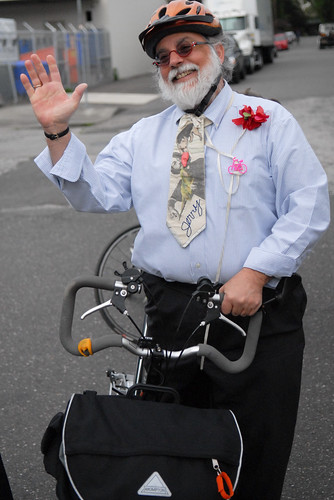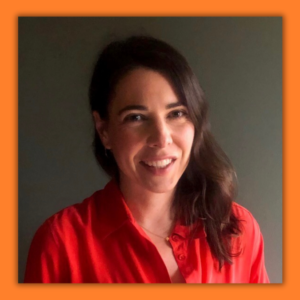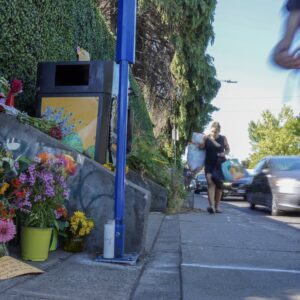“When I came to the committee, the glass ceiling was low; there were few listening within ODOT and bike lanes were pesky mosquitoes to be patronized.”
— AJ Zelada
ODOT made a big announcement today that has been circulating in the bike advocacy sphere for a while: the Oregon Bicycle and Pedestrian Advisory Committee (OBPAC) is seeking new members. What the official announcement doesn’t say is that they need to fill five vacancies out of eight total seats on the committee. This is a big deal. If you’re not familiar with OBPAC, they are a governor-appointed group that “acts as a liaison between the public and ODOT.” They also play a key advisory role within ODOT and act as experts on biking and walking laws, projects, and so on (not to be confused with the Oregon Transportation Commission (OTC), which actually sets ODOT policy). The OBPAC also reviews grant applications and award millions of dollars in project funding.
Northeast Portland resident AJ Zelada has served on the committee for eight years and spent the last two as its Chair. He feels these vacancies at OBPAC are, “an incredible opportunity to make a big difference.” He wrote me a letter on January 22nd outlining the history of the committee, of ODOT’s relationship to bicycling, why now is such a crucial moment for active transportation at the agency, and how the OBPAC will play a vital role in the future.
He gave me permission to share his letter. It offers valuable, behind-the-scenes context and a poignant call to action. I’ve posted it below (nearly verbatim, with minor edits for clarity and brevity):
Jonathan,
I am sadly leaving after 8 years and two years as the Chair. I wanted you to have some history and some awareness about the importance of this group. For my part it has been quite a journey. I had no idea I would come to live and breathe the importance of bicycles as the medium to our society’s health and as a reinforcement about ourselves in this world’s fabric…
OBPAC is the only state entity that has bicycle in the title. It has a legacy from the early 1970s that requires state gas revenues to be spent at a minimum of 1% on bicycle infrastructure (the “Bicycle Bill”).
This set the stage in the 70s, but the OBPAC got stuck in the Technical Services department at ODOT until two years ago. It is now a cornerstone of the Active Transportation section in the Planning Department. This is a high-tier placement (see Changes at ODOT could bring new era for active transportation). And at this time we are about to embark on creating a Bicycle & Pedestrian Plan for the state of Oregon. How we got here is important. It is a real stage for change. And it is explicit that the new members of the OBPAC have a ton of passionate energy and wherewithal to accomplish many things.
When I came to the committee, the glass ceiling was low; there were few listening within ODOT and bike lanes were pesky mosquitoes to be patronized as the law required them on new roads but not necessarily on redesigned roads. There were many parts of the state that ignored even the rules and protocols established by ODOT for bikes/peds. The committee was aimed at selecting grants by enlightened applicants that would help this infrastructure. It was a passive system. No state policy existed guiding any part of ODOT to change or improve bicycling or pedestrian issues.
Bicycle/pedestrian amenities were the road hand-bag accessories which land developers might add like a ribbon on a gift; but more likely just not provide and depend on the state to contribute or pay for later. And we are indeed paying now for the missing sidewalks across Oregon (and the USA). Second, if there was money for these bike/ped projects it was only enough for low-hanging fruit projects with cities and counties competing for a slice of the $4 to 5 million available every two years. The absence of a guiding principle, political vision, and enabling process was a collective family of ghosts among the Salem hallways.
Then, a few years ago, OBPAC member Jerry Norquist and I slowly and determinedly started interacting with Gail Achterman (the late visionary and champion of active transportation who chaired the Oregon Transportation Commission) to try and understand how we could be heard. In my readings, I had seen the history of Europe’s more mature integration of bicycling from their 1970s, 80s and 90s. We were, and are, on a parallel trajectory in accomplishing major bicycling and pedestrian infrastructure to change how our society uses transportation. They had the grassroots in the 1970s and those people changed the city-level governments to respect a non-automobile paradigm and to place a higher value on local connections and communities. The cities in turn began to influence the higher level ‘states’ and finally states actualized a federal level of policy and country-wide spending.
Gail nurtured us. We collectively saw the difficulty with having the monies silo-ed into different pots with restrictions on each pot. There was no way a larger, more industrious, more profound strategy could be accomplished with a grand project. Little pots of money make little projects. And I mean little, we were voting on projects that were 2 blocks of sidewalk infill versus a project for a mid block crossing where a child had been killed running to a small market adjacent to a park. Not only did we have to decide between these types of projects but there was no place to say: ‘Wait, let’s find out what communities need and then pour the money into it.’ There was no policy direction to analyze not only the state needs but also to determine choices of state-wide spending. This is what I mean by passive.
We could not direct a policy of need; we could choose what was submitted. And the system was geared to applicants going for the easy sounding grants built for success — but not necessarily built for system development. This is not to demean small projects. What one becomes aware of is just how important those two block infill projects can be. When one looks at the bicycle/pedestrian work done in places like Terre Bonne or Prospect (small towns in Oregon), you become sensitized immediately that what a difference it makes to a community.
Things have changed but we need people who have vision for a state-wide systems approach. OBPAC has changed; ODOT is changing. We need people on this committee who want to create infrastructure for communities to flourish for the many reasons of health, social equity, climate improvement, for supporting revenue structures that are across the board in “price to earnings” for societal maintenance, and also for the joy of connecting humans to others.
I realize I am drifting here, but it is purposeful. In many ways, the bike is the medium. When you bike you are face-to-face with people; you see their smile, their sweat, their off-in-space look. You make community contact. This is the stuff of being human and it is a barometer of the human scale. In a car, you are in the cockpit on a mechanized scale. Bicycles enable this very direct real facial recognition democracy; cars do not. Bikes are that medium; humanity and community are that message. Simply, when people drive by others, there is very little connection; walk past a person multiple times in your neighborhood or bike by the same person, you will make a connection.
But in connecting with one another also makes us face the many decisions to come. In understanding this, one realizes that pitting one group against another rips us apart. The whole tax issue of who pays for roads does exactly that. We need to understand that transportation is a huge part of the society’s blood vessel matrix.
So, the next applicants for OBPAC: You have the stage! But, the difference is that now we have many within ODOT who are completely receptive to increasing monies to Active Transportation projects. Two years ago Governor Kitzhaber directed Matt Garrett, Director of ODOT, and Pat Egan, Chair of the OTC (Oregon Transportation Commission), to require several principles to accomplish a new successful transportation system given the daunting limiting issues of revenue, increasing need of maintenance, shrinking work force, etc. Kitzhaber’s lead item: Are the correct people at the table? With this sweeping question, the OTC answered by directing the Area Commissions on Transportation to appoint a voting multimodal member to each commission. With this ordination, Kitzhaber has lifted the glass ceiling.
But, here again, this where we need people with visions, people with passions.
I invite anyone to apply who is willing to give a day of energy for each month to the committee. As we thank so many people around the state outside and inside ODOT who have heard our explicit concerns and given real support; we want collaborative people to sit at this new table. I want you to think systems. I want the new committee to think about the state as whole, to think about the next five years, the next ten. I don’t want you to paint white bike lane stripes as the only answer; I want you to think in life-cycles where infants, children, school age, young adults, working stiffs, retired people and aging individuals are traffic. Not cars or bikes. But communities of people on the move.
As my mentor and friend, Jerry Norquist, said, we have moved the needle a little more. And now as Sheila Lyons (Previous Program Manager of ODOT’s Bicycle & Pedestrian Program and Bicycle & Pedestrian Facility Specialist with Active Transportation Section) says to me: When you are at the table you have to cut your own meat.
Join Us.
Dr. Z
Thank you AJ for your service all these years. I can only hope the new members that step up to fill your shoes have the wisdom and passion for change that you and your fellow committee members have shown.
— If you’d like to apply to be an OBPAC member, you can fill out an interest form here. For questions about the committee, contact Sheila Lyons, ODOT Bicycle & Pedestrian Program manager at (503) 986-3555 or sheila.a.lyons@odot.state.or.us.







Thanks for reading.
BikePortland has served this community with independent community journalism since 2005. We rely on subscriptions from readers like you to survive. Your financial support is vital in keeping this valuable resource alive and well.
Please subscribe today to strengthen and expand our work.
The link to volunteer is broken — an extra period at the end. Otherwise, wow, this is great news! Thanks for sharing!
I’m interested, but as a student, time is a problem… Then there’s time remaining in country. Lord Willing, I’ll be outta here someday soon.
Thanks for the heads up Jonathan. And thanks to all these pillars for creating the foundation for biking in Oregon- Jerry, AJ (and Gail- wherever you are)- thank you for everything. We wouldn’t be here without you.
If my life was just a little bit simpler right now I would be very, very tempted to apply for one of these positions.
Jonathan: have you considered it? You’re well-spoken and have a great feel for what is needed. (Or, would this be too much of a conflict of interest?)
While we can form committees to beg rights from bureaucrats for infrastructural improvements, we can also quite simply take the streets that are ours to begin with. Boundless opportunities on all sides.